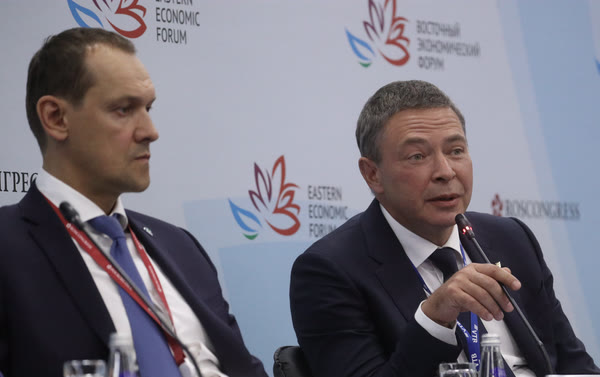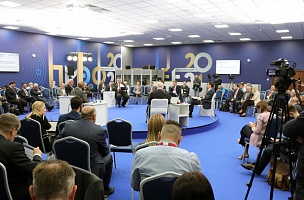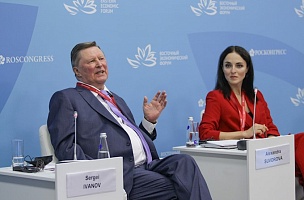KEY CONCLUSIONS
The geodata market has expanded by several times in recent years and has further prospects
“Significant growth [has been seen] in the volume of the cartographic and geodetic market and geodata services. Over the past seven years, it has grown two and a half times. It is growing by 15–20% per year,” Director of the Federal Service for State Registration, Cadastre and Cartography Oleg Skufinsky.
“Digital technologies will certainly be in demand and will give a new impetus to the turnover rate of real estate, which is being built and will continue to develop,” VTB Bank Deputy President and Chairman of the Management Board Anatoly Pechatnikov.
The quality of geodata affects the sustainable development of a company, region, and country
“We clearly understand that it is virtually impossible to manage the development of a region without high-quality geodata. The first rule is: if you want to manage something, you must be able to calculate it. Visualization is also essential to making data-driven management decisions. It’s impossible to do this without visualization systems and correct geographic information systems. At present, we are actively working on the digitization of our territory. We will have a digital master plan of the southern agglomeration of Sakhalin by the end of the year,” Deputy Chairman of the Sakhalin Region Government Vyacheslav Alenkov.
“On the one hand, we see the explosive growth in the geospatial data industry and technologies, but this isn’t enough to help countries. We need to actively introduce them. All the Sustainable Development Goals can only succeed through the implementation of a spatial database,” Rumyana Tonchovska, Senior Land Administration Officer-IT of the Partnerships, Advocacy, and Capacity Development Division of the Food and Agriculture Organization (FAO) of the United Nations.
“When a platform with accurate and complete geospatial data appears, the opportunities for their use expand. Essentially, we often work with some kind of paper information or what ‘Uncle Vanya’ told us at the enterprise. The platform will solve this problem and make it possible to comply with international standards in transactions,” Partner and Head of Operational Risk and Sustainability at KPMG in the CIS Igor Korotetskiy.
“We have one major task – to fulfil the decree of the Russian president on the construction of one billion square metres by 2030. Without those digital solutions and what [the Federal Service for State Registration, Cadastre and Cartography] is doing now, it will be impossible,” Russian Deputy Minister of Construction, Housing, and Utilities Nikita Stasishin.
PROBLEMS
Geodata is currently contained in various registries that are not aligned with each other
“We need to make progress in integrating various models and databases, especially geospatial data,” Senior Professor in the Department of Geoinformatics and Surveying at Mainz University of Applied Sciences Hartmut Müller.
“Here’s what we have today: various imported cartographic bases, which generally serve as the platform for the compilation of the corresponding data layers. Numerous regional and municipal services are already being formed on this basis. [There is] incomplete and inaccurate data not only in the [Unified State Register of Real Estate], but also in other information systems and departments. Today, as historically has been the case, out of 172 million objects in the [Unified State Register of Real Estate], 48 million do not have accurate information about the copyright holders, 24 million land plots do not have exact boundaries, and 4.5 million objects are registry errors that have historically accumulated. Information about real estate is not consolidated,” Director of the Federal Service for State Registration, Cadastre and Cartography Oleg Skufinsky.
Information about land plots is difficult to obtain and much of it is not digitized
“About 120 million titles have not been digitized,” Director of the Federal Service for State Registration, Cadastre and Cartography Oleg Skufinsky.
“The main difficulty is the availability, completeness, and reliability of public information about land resources and capital construction projects. The faster we receive this information, the faster we can move along our investment activities. We often spend time searching, especially when it comes to lands with a long history: we have to manually extract information, which at best may be in paper form. The inaccessibility of a lot of information primarily hinders the investment process,” SIBUR Member of the Board and Managing Director Pavel Lyakhovich.
SOLUTIONS
Create a unified digital geodatabase and develop new digital formats
“Yesterday we submitted the draft state programme ‘National System of Spatial Data’ to the Russian government. It’s a system-forming document that is consistent with the best world practices, in spirit, in meaning, and in trends. I believe we have every chance of becoming leaders by 2025. Key initiatives as part of this strategy include the creation of a state geodetic network as well as a software and hardware complex. This involves creating a unified electronic cartographic base and a complete and accurate register,” Director of the Federal Service for State Registration, Cadastre and Cartography Oleg Skufinsky.
“VTB Bank has now been granted the opportunity to develop a unified digital signing platform. This is undoubtedly an integral part of making a transaction digital. It’s a new format for the provision of electronic signatures and the reform of certification centres and everything connected with it. We will do this at our own expense and then give it to all stakeholders, including citizens and organizations on a concession basis,” VTB Bank Deputy President and Chairman of the Management Board Anatoly Pechatnikov.
For more, see the Roscongress Foundation’s Information and Analytical System roscongress.org






